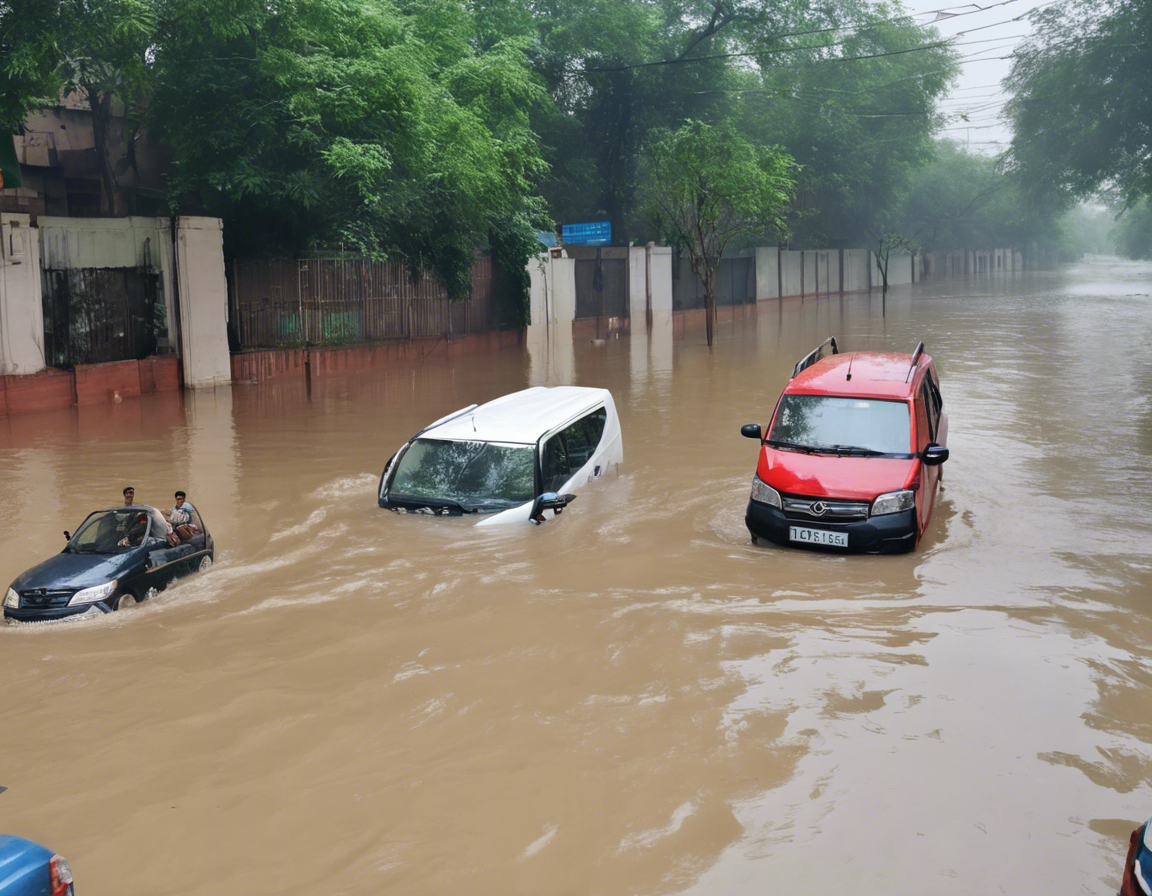With the onset of monsoon season in India, various parts of the country experience heavy rainfall, bringing relief from the scorching heat but also leading to waterlogging and flooding in many areas. Delhi, the bustling capital city, is no exception to this phenomenon. In recent times, Delhi has also faced challenges due to waterlogging and floods caused by incessant rains. This article aims to provide a comprehensive overview of the Delhi flood update, including recent news, updates, causes, impacts, and preventive measures that can be taken to mitigate such situations in the future.
Current Situation
As of the latest reports, Delhi has been witnessing heavy rainfall, leading to waterlogging in several parts of the city. Areas like South Delhi, East Delhi, and parts of Central Delhi have been particularly affected. The overflowing of Yamuna river is also a major concern during the monsoon season in Delhi. The authorities are on high alert to monitor the situation and take necessary actions to ensure the safety of the residents.
Causes of Floods in Delhi
-
Urbanization: The rapid urbanization and unplanned development in Delhi have led to the concretization of large areas, reducing the natural drainage capacity of the soil.
-
Poor Drainage System: The inadequate drainage system in many parts of Delhi hampers the smooth flow of rainwater, resulting in waterlogging and flooding.
-
Encroachment of Water Bodies: The encroachment of water bodies and floodplains further exacerbates the flooding situation in Delhi.
-
Climate Change: The impact of climate change has led to unpredictable weather patterns, including intense rainfall events, contributing to the flooding in the city.
Impacts of Floods in Delhi
The floods in Delhi have various negative impacts on the city, its residents, and the environment. Some of the significant impacts include:
-
Disruption of Daily Life: Floods disrupt daily life, causing inconvenience to the residents and affecting transportation and communication systems.
-
Damage to Property: Floodwaters can cause damage to homes, businesses, public infrastructure, and vehicles.
-
Health Hazards: Waterborne diseases, contamination of water sources, and sanitation issues can arise due to floods, posing health hazards to the population.
-
Loss of Livelihood: Farmers, small businesses, and daily wage workers are among the most affected by floods, leading to a loss of livelihood.
Preventive Measures and Solutions
To address the issue of floods in Delhi, proactive measures and sustainable solutions need to be implemented. Some of the key preventive measures include:
-
Improving Drainage Systems: Upgrading and maintaining the drainage systems in Delhi to ensure proper flow and management of rainwater.
-
Rainwater Harvesting: Promoting rainwater harvesting techniques in residential and commercial buildings to recharge groundwater and reduce the burden on drainage systems.
-
Flood Preparedness: Developing early warning systems, emergency response plans, and evacuation strategies to mitigate the impact of floods.
-
Green Infrastructure: Implementing green infrastructure solutions such as creating green spaces, permeable pavements, and rooftop gardens to absorb rainwater and reduce runoff.
Frequently Asked Questions (FAQs)
- Q: Which areas in Delhi are most prone to floods during the monsoon season?
A: Low-lying areas like South Delhi, East Delhi, and parts of Central Delhi are more prone to floods due to their geographical location and poor drainage systems.
- Q: How does the overflowing of the Yamuna river contribute to floods in Delhi?
A: The overflowing of the Yamuna river during the monsoon season leads to waterlogging in adjacent areas and exacerbates the flooding situation in Delhi.
- Q: What role does climate change play in the increasing frequency of floods in Delhi?
A: Climate change has led to erratic weather patterns, including intense rainfall, which contributes to the increasing frequency of floods in Delhi.
- Q: How can individuals contribute to flood mitigation efforts in Delhi?
A: Individuals can contribute by practicing water conservation, maintaining cleanliness to prevent clogging of drainage systems, and supporting community initiatives for flood preparedness.
- Q: Are there any government initiatives in place to address the issue of floods in Delhi?
A: The Delhi government has initiated projects for improving drainage systems, promoting rainwater harvesting, and enhancing flood preparedness to address the issue of floods in the city.
In conclusion, the issue of floods in Delhi requires a multi-faceted approach involving urban planning, infrastructure development, community participation, and sustainable practices to mitigate the impact of floods and ensure the resilience of the city. By raising awareness, implementing preventive measures, and fostering a culture of preparedness, Delhi can better cope with the challenges posed by floods during the monsoon season.
